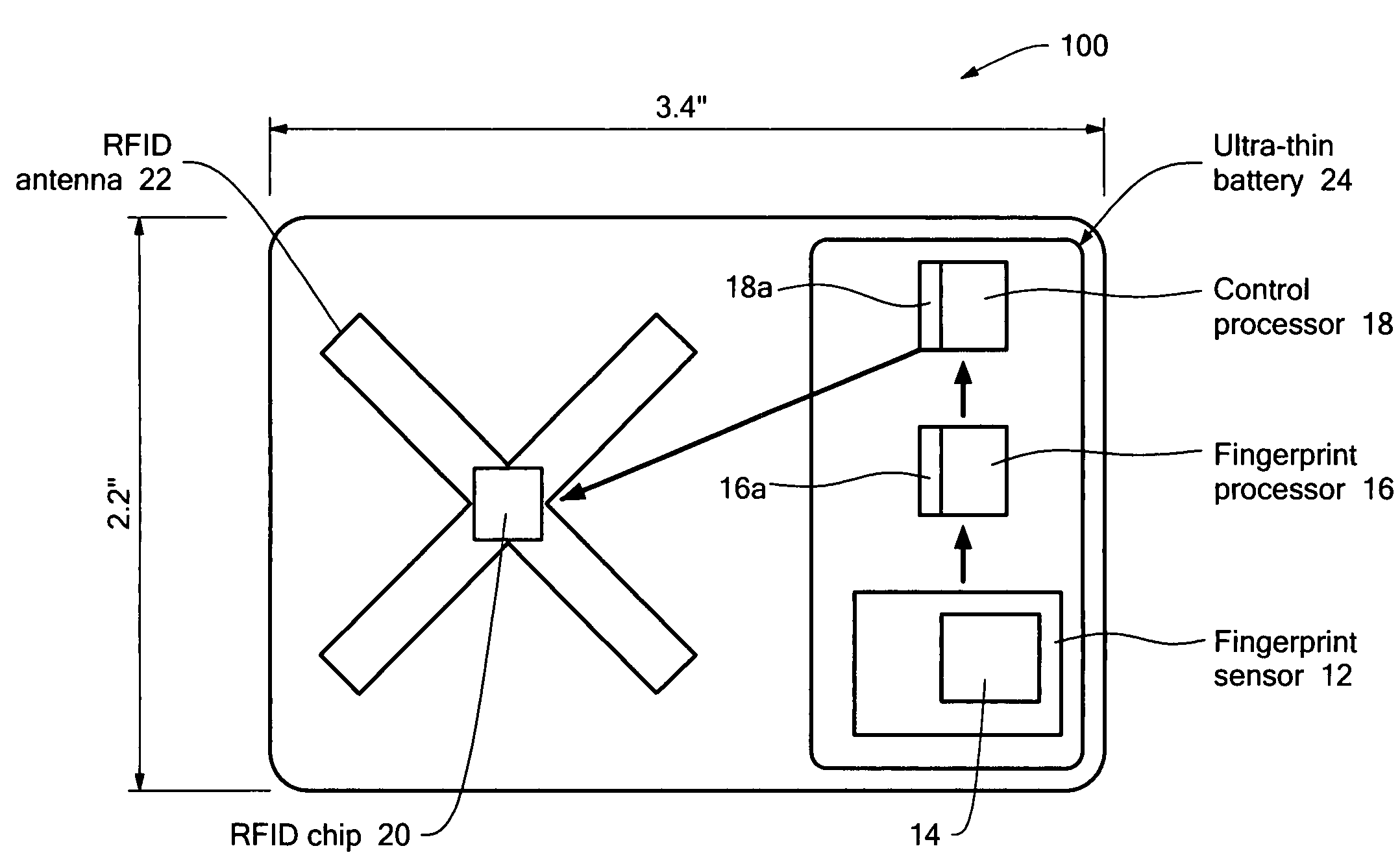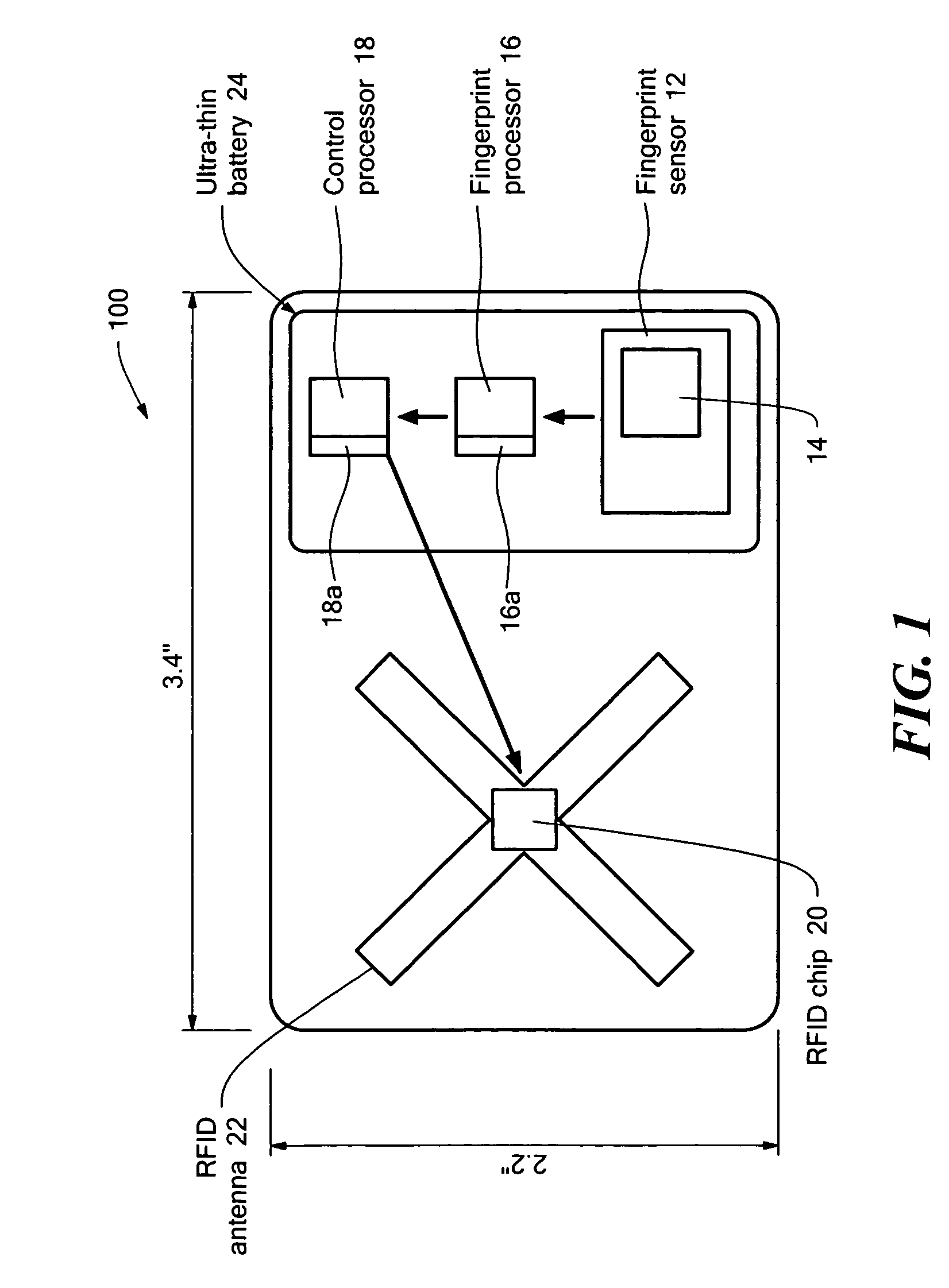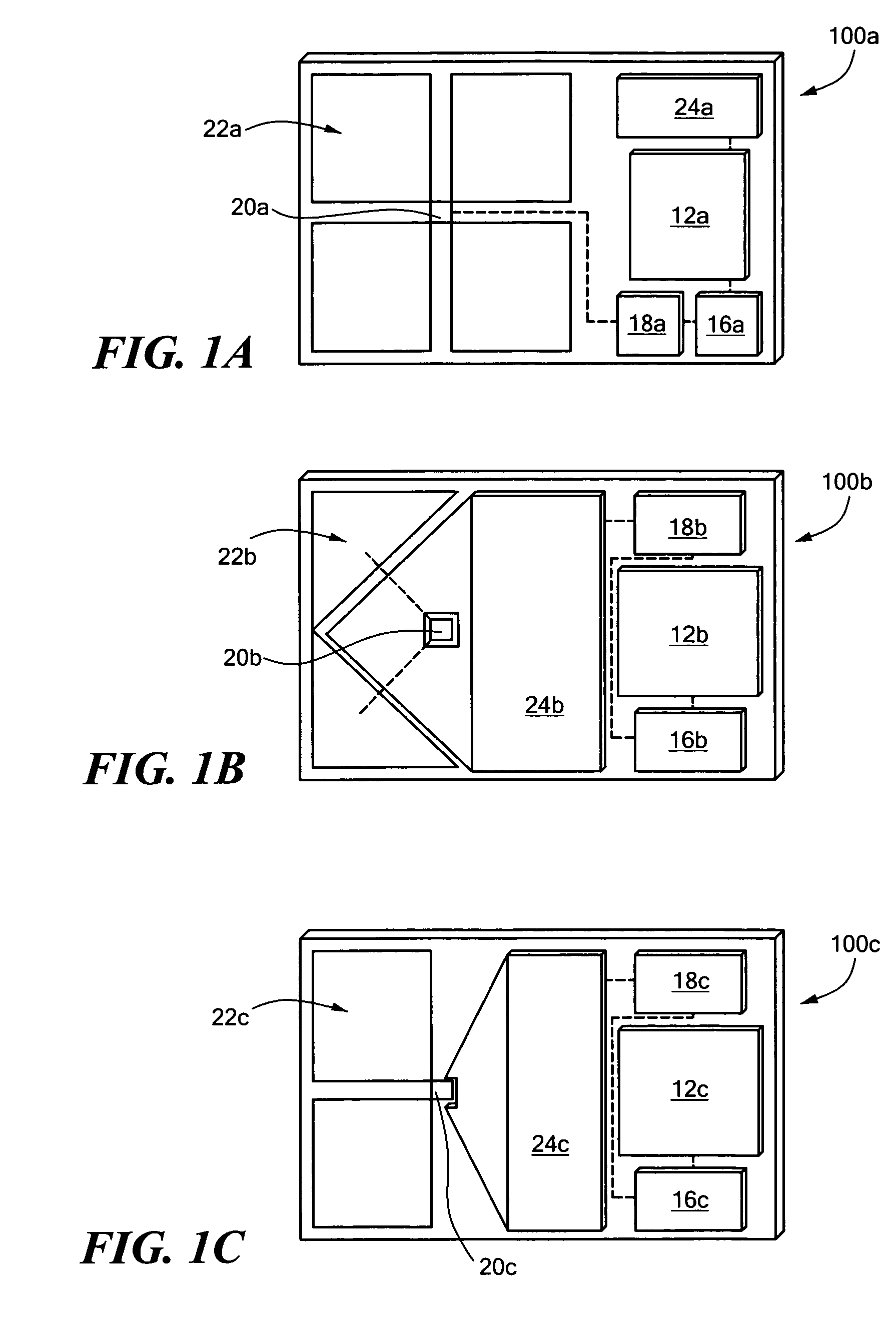Personal authentication device
a technology of authentication device and fingerprint, which is applied in the field of fingerprint biometric self-authentication identification card, can solve the problems of reducing the acceptance of such identification cards as proof of positive identification, unsatisfactory, and the inability of unauthorized users to use cards, so as to achieve the effect of reducing the privacy concerns of people and governments implementing biometric identification systems and high speed
- Summary
- Abstract
- Description
- Claims
- Application Information
AI Technical Summary
Benefits of technology
Problems solved by technology
Method used
Image
Examples
Embodiment Construction
[0022]Before providing a detailed description of the invention, it may be helpful to review some of the features of existing identification systems. It is typical to issue to an individual an identification card to help authorities identify the holder. A common identification card is a passport which is primarily used to control access into a country. A passport typically includes the name and address of the individual, an identification number, date of birth, a picture of the individual and other pertinent information that can be used by the authorities to verify the holder of the passport is the individual identified by the passport The latter requires an official to review the contents of the passport and match the features of the individual holding the passport with the passport to verify the individual is who he claims.
[0023]Another common identification card is a drivers license which will typically includes the name and address of the individual, an identification number, dat...
PUM
 Login to View More
Login to View More Abstract
Description
Claims
Application Information
 Login to View More
Login to View More - R&D
- Intellectual Property
- Life Sciences
- Materials
- Tech Scout
- Unparalleled Data Quality
- Higher Quality Content
- 60% Fewer Hallucinations
Browse by: Latest US Patents, China's latest patents, Technical Efficacy Thesaurus, Application Domain, Technology Topic, Popular Technical Reports.
© 2025 PatSnap. All rights reserved.Legal|Privacy policy|Modern Slavery Act Transparency Statement|Sitemap|About US| Contact US: help@patsnap.com



